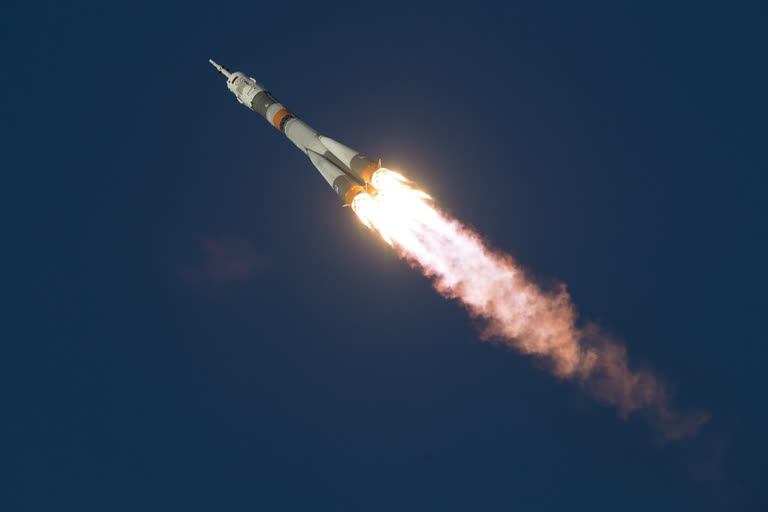Hyderabad: The battle for global supremacy between the US and China has moved its base from Earth to the Moon and Mars. Both nations declared economic expansion into outer space, pushing the rest of the world into uncertainty. Though not to the scale of the operation by the US and China, India too is exploring Mars.
The executive orders issued last April by President Donald Trump and Chinese space ambitions make it clear that India needs to pace itself to consolidate its space programs. The US warned that it would oppose any nation that objects its claim to lunar resources. Why would any nation oppose commercial mining in space in the first place? The answer lies in the 1979 Moon Treaty, signed as a part of the United Nations Charter. The Agreement was signed by 18 countries including India, Pakistan and France. The US, China, Russia and the UK did not ratify the treaty. Though India officially signed the treaty, it did not approve of its objectives. For some time now, India has been asked to withdraw from the agreement.
The Moon agreement governs the activities of countries on the Moon and other celestial bodies. These bodies should be used exclusively for peaceful purposes. By abiding by the objectives, the resources extracted from the Moon must be shared with all mankind. Countries that did not sign the treaty need not oblige to this. That is why the US executive order stated that the uncertainty surrounding the extraction and utilisation of space resources must be cleared. The order emphasizes that the US does not view outer space as a “global commons”. Trump called the treaty of 1979a failed attempt. Further, the US government suspects that China might create obstacles by taking undue advantage of the treaty.
China is rushing ahead with its own space agenda. Recently, it launched the Flexible Inflatable Cargo Re-entry Vehicle (FICRV) into orbit by the Long March-5B's maiden flight. Earlier, China proposed establishing Moon-based Special Economic Zone, aimed at bringing USD 10 trillion to its economy through space services, industrial production and commercial space mining. To combat China’s overambitious space missions, the US introduced the Artemis program, with the long-term goal of establishing a sustainable presence on the Moon. In this context, several experts are strongly advising India to withdraw from the 1979 Treaty and join the Artemis program. The Government of India is going to thoroughly consider the possibility. It is noteworthy that India launched several successful space missions like Mangalyaan, Chandrayaan and Gaganyaan. India needs the US’ support to rise against China’s space dominance.
Also Read: China moves rocket into place for nation's 1st Mars mission
The US is preparing to launch a major space mission through a public-private partnership. The National Aeronautics and Space Administration (NASA) is building powerful new rockets for the Space Launch System. Private players like SpaceX, Amazon, Boeing and Lockheed Martin are developing rockets and combat vehicles. SpaceX has already launched several operational missions. The US private players are gearing up to train government space diplomats, construct space stations and transport astronauts and equipment from Earth. Naturally, China has condemned these developments. In fact, China launched the FIRCV the same day the Artemis program was announced. By 2050, China plans to establish the Moon SEZ. The China Aerospace Science and Technology Corporation (CASC) is the main contractor for the Chinese space program.
Following the lead of space-faring nations like the US, Russia, European Union, China, India and Japan, the United Arab Emirates (UAE) too launched its space program. Japan and the US have deployed spaceships for asteroid mining. India’s space journey began in 1999. Currently, the government is making long-term arrangements for manned missions and mining lunar resources. After Chandrayaan, the ISRO is targeting a landing site near the Lunar south pole. Gaganyaan is designed to carry astronauts to orbit and safely return to Earth. India plans to launch its own space station by 2030. Of the 18 countries that signed the Moon Treaty, only India and France have achieved the distinction of carrying out space missions. France is positive about joining the Artemis program. Japan, Australia and Canada are willing to embark on a journey with the US. India’s space career has been quite successful, thanks to the cooperation of the US, Russia and Japan. Slated to be the next superpower, India must join the US in Artemis space program while independently exploring its own opportunities. At the same time, India must be aware of the US-China space war. The US minces no words in declaring its animosity towards China. Recently, the country set up a space military force foreseeing a possible threat from China. The US Department of Defense released a report which claims that China and Russia have developed space-based weapons. The real intentions behind Chinese counter-space weapons are revealed in the report. India too tested an anti-satellite weapon in March 2019. On the whole, India must acknowledge that space has become a significant military and economic domain; and plan to gain relevant capabilities.
Also Read: US deploys Space Force to Arabian Desert



